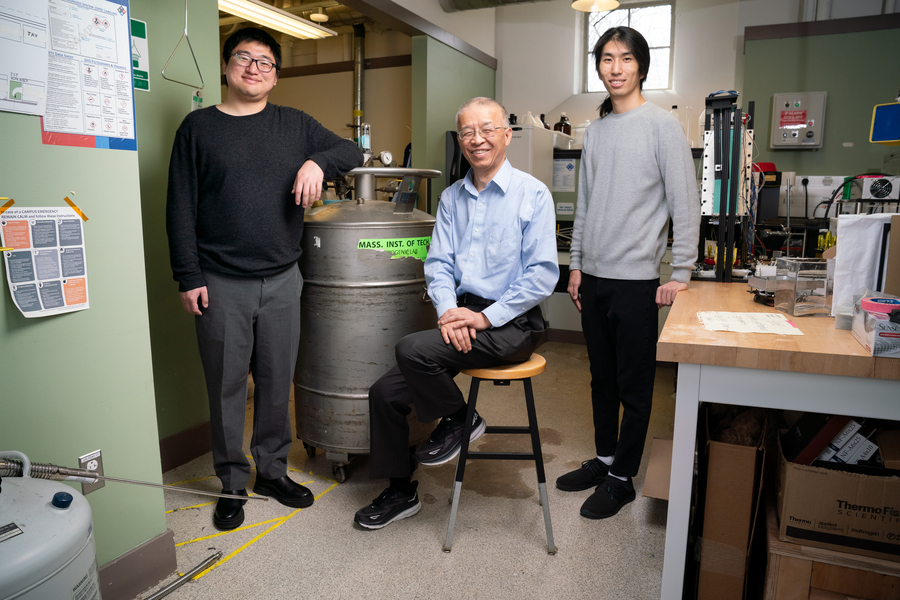MIT Makes ‘Astonishing’ Discovery That Light Can Vaporize Water Without Heat for Desalination
Published on by Water Network Research, Official research team of The Water Network in Academic
MIT Makes ‘Astonishing’ Discovery That Light Can Vaporize Water Without Heat–for Clean Energy and Desalination
It’s not every year that a major discovery is made in the basic natural sciences of Earth, but using painfully precise measurements, MIT has written a new chapter in something that most people probably thought they knew completely: evaporation.
The scientists say the discovery could explain “mysterious measurements” in the literature of clouds which may increase the precision of climate modeling, while also aiding in industrial applications.
In this study, the discovery that evaporation can occur just with light and without heat was so unexpected and surprising that it was subjected to 14 different tests and measurements to try and disprove what the scientists observed.
One consistent finding was that the air temperature above the place at which water molecules were turning into gases would cool down briefly then level out, showing definitively that thermal energy is not required.
“I think this has a lot of applications,” said Professor of Power Engineering at MIT, Gang Chen. “We’re exploring all these different directions. And of course, it also affects the basic science, like the effects of clouds on climate, because clouds are the most uncertain aspect of climate models.”
Other fascinating details from the study include the data point that photoevaporation is strongest when the light arrives at a 45° angle, and/or when the light is on the green spectrum, which is odd, MIT press writes, because that’s the color at which water is most transparent.
Without every leaf being turned over, Chen et al.’s working hypothesis is that when arriving at sufficient angle and force, light particles can knock loose single water molecules.
Surprising “photomolecular effect” discovered by MIT researchers could affect calculations of climate change and may lead to improved desalination and drying processes.
David L. Chandler | MIT News

Caption:
Researchers at MIT have discovered a new phenomenon: that light can cause evaporation of water from its surface without the need for heat. Pictured is a lab device designed to measure the “photomolecular effect,” using laser beams.
Credits:
Photo: Bryce Vickmark

Caption:
The authors say their study suggests that the photomolecular effect should happen widely in nature, from clouds to fogs, ocean to soil surfaces, and plant transpiration. “I think this has a lot of applications,” Gang Chen, pictured in center, says. Chen stands with authors Guangxin Lv, on left, and James Zhang. Author Yaodong Tu is not pictured.
Credits:
Photo: Bryce Vickmark

Caption:
“We’re exploring all these different directions,” Chen says. “And of course it also affects the basic science, like the effects of clouds on climate, because clouds are the most uncertain aspect of climate models.”
Credits:
Photo: Bryce Vickmark

Caption:
Because the effect is so new and unexpected, Chen says, “this phenomenon should be very general, and our experiment is really just the beginning.”
It’s the most fundamental of processes — the evaporation of water from the surfaces of oceans and lakes, the burning off of fog in the morning sun, and the drying of briny ponds that leaves solid salt behind. Evaporation is all around us, and humans have been observing it and making use of it for as long as we have existed.
And yet, it turns out, we’ve been missing a major part of the picture all along.
In a series of painstakingly precise experiments, a team of researchers at MIT has demonstrated that heat isn’t alone in causing water to evaporate. Light, striking the water’s surface where air and water meet, can break water molecules away and float them into the air, causing evaporation in the absence of any source of heat.
The astonishing new discovery could have a wide range of significant implications. It could help explain mysterious measurements over the years of how sunlight affects clouds, and therefore affect calculations of the effects of climate change on cloud cover and precipitation. It could also lead to new ways of designing industrial processes such as solar-powered desalination or drying of materials.
The findings, and the many different lines of evidence that demonstrate the reality of the phenomenon and the details of how it works, are described today in the journal PNAS, in a paper by Carl Richard Soderberg Professor of Power Engineering Gang Chen, postdocs Guangxin Lv and Yaodong Tu, and graduate student James Zhang.
The authors say their study suggests that the effect should happen widely in nature— everywhere from clouds to fogs to the surfaces of oceans, soils, and plants — and that it could also lead to new practical applications, including in energy and clean water production. “I think this has a lot of applications,” Chen says. “We’re exploring all these different directions. And of course, it also affects the basic science, like the effects of clouds on climate, because clouds are the most uncertain aspect of climate models.”
A newfound phenomenon
The new work builds on research reported last year, which described this new “photomolecular effect” but only under very specialized conditions: on the surface of specially prepared hydrogels soaked with water. In the new study, the researchers demonstrate that the hydrogel is not necessary for the process; it occurs at any water surface exposed to light, whether it’s a flat surface like a body of water or a curved surface like a droplet of cloud vapor.
Because the effect was so unexpected, the team worked to prove its existence with as many different lines of evidence as possible. In this study, they report 14 different kinds of tests and measurements they carried out to establish that water was indeed evaporating — that is, molecules of water were being knocked loose from the water’s surface and wafted into the air — due to the light alone, not by heat, which was long assumed to be the only mechanism involved.
One key indicator, which showed up consistently in four different kinds of experiments under different conditions, was that as the water began to evaporate from a test container under visible light, the air temperature measured above the water’s surface cooled down and then leveled off, showing that thermal energy was not the driving force behind the effect.
Other key indicators that showed up included the way the evaporation effect varied depending on the angle of the light, the exact color of the light, and its polarization. None of these varying characteristics should happen because at these wavelengths, water hardly absorbs light at all — and yet the researchers observed them.
The effect is strongest when light hits the water surface at an angle of 45 degrees. It is also strongest with a certain type of polarization, called transverse magnetic polarization. And it peaks in green light — which, oddly, is the color for which water is most transparent and thus interacts the least.
Taxonomy
- Desalination
- Thermal Desalination
- Sustainable Desalination
- Evaporation
- Desalination